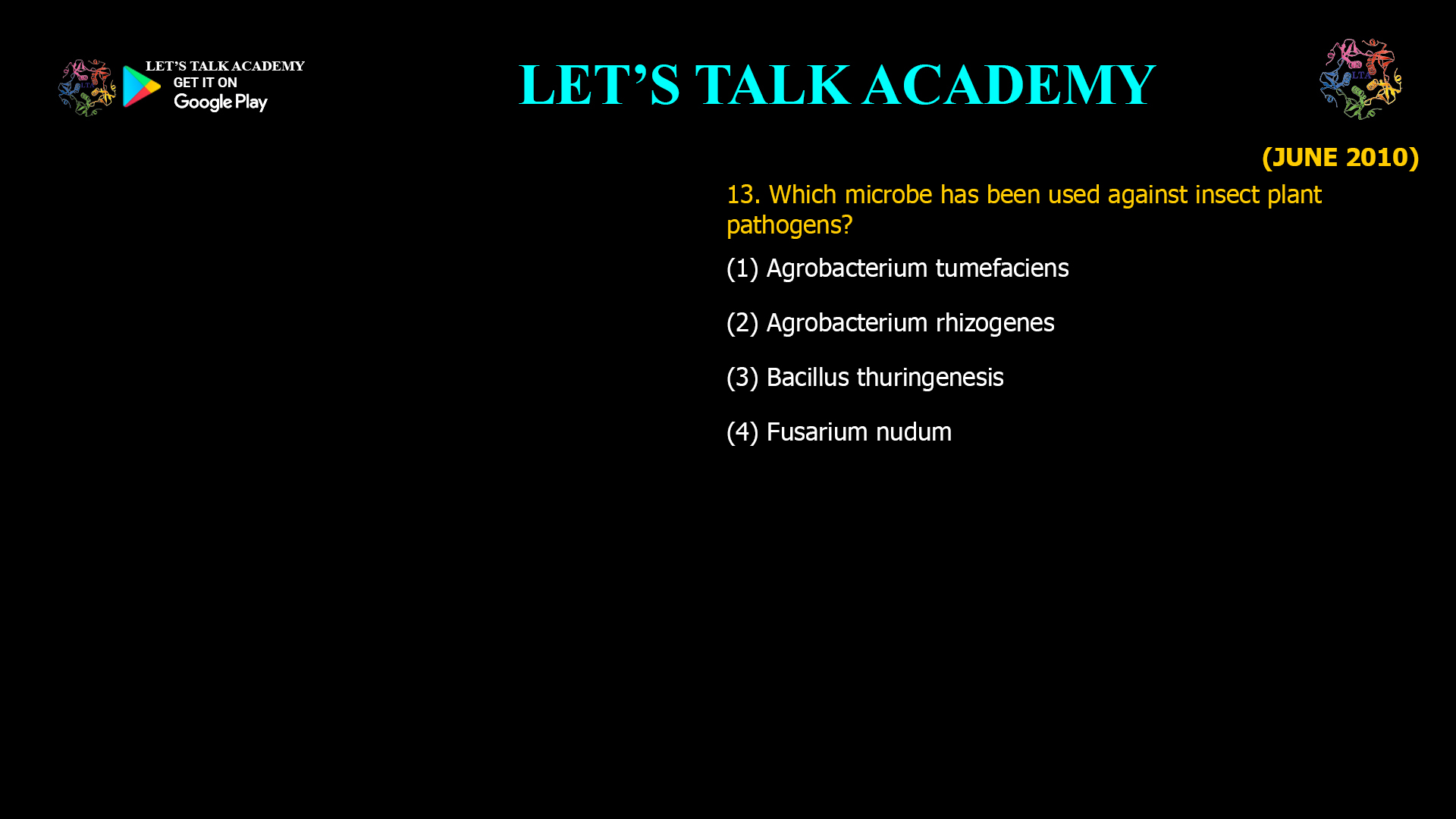- Which microbe has been used against insect plant pathogens?
(1) Agrobacterium tumefaciens
(2) Agrobacterium rhizogenes
(3) Bacillus thuringenesis
(4) Fusarium nudumWhy Bacillus thuringiensis is correct
Bacillus thuringiensis (Bt) is a Gram‑positive, spore‑forming bacterium that produces crystal (Cry) proteins during sporulation which are highly toxic to specific insect larvae when ingested. These Cry toxins disrupt the insect midgut, causing death, and Bt formulations are used worldwide as biological insecticides (sprays, dusts) and as Bt crops where the cry genes are expressed in plants to protect them from insect pests. Thus Bt is the classic microbial agent used “against insect plant pathogens” (i.e., insect pests of plants).
Explanation of each option
-
Agrobacterium tumefaciens
-
A plant-pathogenic bacterium that causes crown gall tumors by transferring T‑DNA into plant cells.
-
Used as a vector for plant genetic transformation, not as an insect biopesticide. It does not naturally kill insect pests.
-
Agrobacterium rhizogenes
-
Causes hairy root disease in plants and is employed to induce transformed root cultures for secondary metabolite production.
-
Again, it is a plant pathogen and transformation tool, not an agent used directly to control insects.
-
Bacillus thuringiensis – Correct
-
Produces insecticidal Cry and Cyt proteins active against Lepidoptera, Coleoptera, Diptera and some other invertebrates.
-
Commercial Bt-based biopesticides and Bt transgenic crops are standard tools in integrated pest management for controlling insect pests that damage crops.
-
Fusarium nudum
-
A fungal species associated with plants (often as an endophyte or pathogen depending on the context).
-
Not used as a mainstream microbial insecticide; some Fusarium species are themselves plant pathogens, so they are not applied to protect crops from insects.
SEO‑oriented introduction (for article use)
In sustainable agriculture, Bacillus thuringiensis is the best-known microbial agent used to protect crops from insect pests because its Cry proteins specifically kill target insect larvae while being safe for plants and most non‑target organisms. In contrast, Agrobacterium tumefaciens and Agrobacterium rhizogenes are primarily plant pathogens used as genetic engineering tools, and Fusarium nudum is not a standard biocontrol agent against insect plant pests, making option (3) the correct choice.
-



